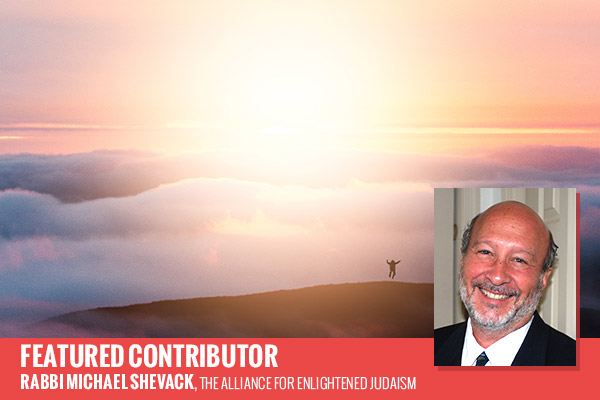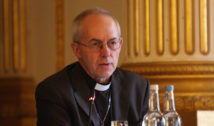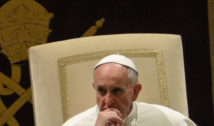
To Cut? Or Not to Cut?: Enlightened Circumcision
- By Rabbi Michael Shevack --
- 26 Jul 2019 --

Sanctifying and living the meaning of circumcision
In our last article we discussed kosher, as it is taught in the Torah, and we presented an enlightened viewpoint that “fitting” for human beings is not a primarily a “religious” concept, part of some “fixed revelation.” But, it means, primarily, that food should reflect certain “natural law” which orient the human being to rise beyond “dirt,” “decay,” “disease,” “destruction,” “dung” … Kosher contributes to building a powerful, GENERATIVE bio-historical force, which is the essence of covenant. This produces Good, i.e. from God.
To Cut? Or Not to Cut?: Enlightened Circumcision[/tweetthis]
This concentrating of the generative forces of nature, and the diminishing of the de-generative forces, is the foundation of all positive Jewish spiritual experience. It represents a very complete soteriology insofar as mind, body, spirit and soul in harmony with the earth, i.e. Creation. This is real-earthly salvation.
Only if we take this same perspective, can we also approach an enlightened view of circumcision, and remove some of the current insanity.
Since the Sixties, there has been a challenge to circumcision. Prior, circumcision had become religiously-identified with “morality.” However, morality had been overly-identified with “legality” and both of these with “Thou Shalt Nots.” Thus, circumcision became religiously associated with some kind of repression of sexual freedom, wildness or chaos. Circumcision was suspect as a cultic violation of human naturalness. Not a few circumcised men refused to circumcise their boys, lest they be less natural. And since “natural” was believed to mean “living more in harmony with the Creative Force of Nature,” therefore “God,” a strange irony surfaced: non-circumcision became a kind of circumcision to honor the goodness in creation. It was really a dishonoring of the excessive, obsessive-compulsive “morality,” which had become non-natural!
Oddly, circumcision in the Bible is not associated with repression of sexuality, but, in fact, increase of sexuality, not just the generative force, but pro-generative force necessary for building a powerful, historical, people. One only has to look at the pro-generative greatness of Abraham, to understand its import!
Anthropologically, there have been reported well over 300 different naturalist tribes around the world that engage in circumcision. Circumcision as a ritual is not just a Jewish “thing.” As with Judaism, it is often associated with some kind of “male bonding” ritual, that links the new male infant with his male group. It is, in its rawest understanding, a kind of deep “dermatographia,” a writing on the body, a devotion of a body part to Something Beyond its mere organic-form.
Why is circumcision so wide-spread? What makes Judaism’s circumcision different?
Mere naturalism in the human, curiously not unlike that of our closest ancestors, the Bonopo chimps, and as also described by the earliest goddess-images of pre-Israelite culture, such as Astarte, (if not the Eastern religious flavor of the “Hippie” era)— are often female-imaged and matriarchal. It is not associated primarily with the male gift, which is to plow nature, reshape it, and direct it, into linear and hierarchal (penile) structures of male tribal leadership.
Circumcision, nakedly viewed, removes the covering of the head of the penis, and the surrounding mucous membranes, having the effect of decreasing the sensitivity – i.e. the impression/dominance that sex with women, has upon the man. The male consciousness gains a delicate separation from being subordinate to the female-natural. Human consciousness is drawn ever so slightly away from the bodily-natural, and more towards the potency of conscious mind over nature.
Simultaneously, increasing the potency of human conscious mind over nature, permits the human being to rise above the degenerative forces of nature. Excess indulgence of these lead to the degeneration of the many non-Israelite tribes in ancient past. No doubt such degeneration – not merely moral, but also natural-degeneration, i.e. filth – lead to a considerable amount of smegma, too; circumcision just happens to handle that too.
But, circumcision is not, first and foremost, a hygienic instrument. Circumcision is primarily an instrument of human conscious ascension over earthly nature, of which better hygiene is a super-natural consequence.
In all tribes where circumcision is present, the men tend to be tribal leaders. While not abrogating the earth-naturalist-feminine consciousness, the sky-naturalist-male consciousness is accentuated, to point the tribe, like a penis, in a certain direction.
Fundamentally this is no different than the intention behind Abraham’s circumcision. However, with Abraham, we have one additional component. Abrahamic circumcision is a mark which distinguishes his family from all others in the surrounding area, and “the world.” It marks not mere differentiation between the roles of male and female forces within nature, but, also marks a wider, larger, specification – a global purpose of history, in the theological sense.
Abraham’s circumcision distances himself beyond mere female-naturalism, not just in favor of male-naturalism, but male historical: This is Patriarchy, a model for World Order – the prototype of “prophetocracy” or prophetically-illumined “kingship,” if not the messiah.
Such a Patriarchy (and circumcision) was transmitted to his sons, creating an inter-generational force devoted to world-redemption, through Abraham.
Abraham’s circumcision is expanded, from a mere tribalist devotional, to a world-tribe, or world historical devotional. That is the difference between the Israelite circumcision and the hundreds of other circumcisions that happen around the world.
Therefore, it is not at all surprising that circumcision and increased sexuality and propagation, and the formation of a strong axis of male power, as well as the necessary anchoring of civilization over nature and the spreading of this as a Hebrew World View, are coextensive.
Anyone who would declare the Jewish circumcision to be meaningless, is ignorant. Anyone who would declare that a mere “naturalist” non-circumcision is more covenantal, has lost the import and meaning of history, that is to say, the unique place of Israel, distinct from merely naturalist tribes. They are simply angry at the obsessive-compulsive “morality” which prevents any natural sexual expression of lust, or, “free love,” as they would say in the Sixties.
Now, in this era, we have a phenomenon which must also be accounted for. Women have now entered history. Women are fully active outside the home, beyond child-rearing, and beyond “merely natural” activities. They are captains of industry, and leaders of governments.
The question therefore arises is there a necessary “circumcision” that is important for anchoring this “male-aspect” within women, devoting it from birth, as it is in the male. Certainly, maiming of the clitoris would not count, and this is truly repressive if not destructive of nature, whereas the male circumcision is not.
I am one of a handful of rabbis that will not refuse to perform a “non-surgical circumcision;” I have no reason to apologize for this, and will not. I don’t believe, in this era, that circumcision is an absolute necessary, given the fact that the historical, in and over nature, is well-anchored in human consciousness, and the covenant of Israel, has become, in principle, quite widespread, and is for all intents and purpose universal!
I believe that other varieties of circumcision than the surgical need to be intelligently devised, to handle this moment in history. I believe that a suitable circumcision ritual for women, now that they are fully engaged in history, and positively-assert mitzvoth, is needed.
Whether it is non-penile circumcision for the man, or non-penile circumcision for today’s women, circumcision as a principle of Jewish historical devotion, cannot change, nor be forgotten. Some sort of “reminder” is required.
For this I recommend what I call a “Brit Shabbat.” Since the Sabbath, other than circumcision, is the only other sine qua non of Jews, I think it deserves its proper status as part of a non-surgical circumcision.
(Exodus 31:13ff; Hilchos Shabbos 30:15)
The Sabbath has a deeply related meaning to circumcision. Ceasing labor, means the sanctification of the Creator’s world, before human invention shapes it. Thus, the Sabbath could be said to be brit milah-in-inverse. Rather than sanctifying the male principle over– for the purpose of shaping and subduing– the female-natural, the Sabbath sanctifies the female-natural as the primary God-respected underpinning, upon which the male principle functions. Both sanctify God’s Creation and Human invention, which is the necessary alignment behind any historical covenant which is salvific.
A Brit Shabbat, does not deny nor negate, EVER, the value of surgical circumcision, it just permits a different form of anchoring this incredibly formative principle of World Civilization, in a Jewish form, that has some ground to it. (The specifics of this neo-ritual is beyond the scope of this article.)
Indeed, the link between the eighth day of brit milah, and the Sabbath Zachor, is long-standing insight within the Jewish Orthodox tradition, first emphasized by Rabbi Moses Isserles.
However, for those men, who are adamant about not circumicizing, but for whom a more “feminine” Brit Shabbat, is not relatable, I would also recommend a reframing of the hatafot dam brit– the drawing of a small amount of blood– as a non-surgical or rather insignificantly-surgical circumcision. While this ritual is used for “koshering” non-authoritative surgical circumcisions, such as the hospital, there is no reason to not use it as a less invasive circumicision for those contemporary Jews who are troubled by that degree of genital mutilation.
In summary, circumcision, in any form, surgical or not, is a sanctification of a generative, pro-generative, linear and hierarchical historical force, which is necessary for a continuous, thriving people and world. It represents a deep, physical-awareness of that bio-historical continuity– which Israel was chosen or bred to be.
But unlike mere tribalist versions, it is historical, and its purpose is linked, organically, to a World View; Jews are not merely tribalist, despite the propaganda of the dominant religious culture.
Also, unlike “male forces” which are merely associational, cults of men such as societies, churches, organizations or mere governmental “states” – that do not possess an organic or biological lineage – Jewish circumcision is not in violation of nature, it does not rape the planet nor women.
Abraham has Sarah, and Sarah has Abraham! No mere”universal baptism” as a symbol of covenant can be considered as real-earthly meaningful or complete.
“To cut?” Or, “not to cut?” is a false dichotomy within contemporary Judaism, and in our very Christianized modernist world.[/tweetthis]
To cut or not to cut is not the issue at all for contemporary Jews. The issue is sanctifying and living the meaning of circumcision, in the building up of a powerful God-devoted People of History, for the sake of generating Peace, justice and Compassion throughout the world. The issue is understanding the implicit UNIVERSALISM in what appears, only on the surface, a tribal artifact.
Circumcision, if only merely as a “principle,” is itself the beginning of an enlightened Judaism. It marks the fact – in our flesh or in our consciousness – that we are not merely natural creatures, but, ALSO, super-natural creatures.
Whether male circumcision or female circumcision, this fact must be marked! Never forgotten! Lest we degenerate into mere nature-worshippers.
Jewish Enlightenment, when it is authentic, must affirm circumcision. However, it must affirm circumcision without the obsessive-compulsive disorder and devotional rigidity that – pardon the pun – “dick-tates” only certain ceremonial forms, and is not open to innovation, even in such a tender part of our anatomy.



















